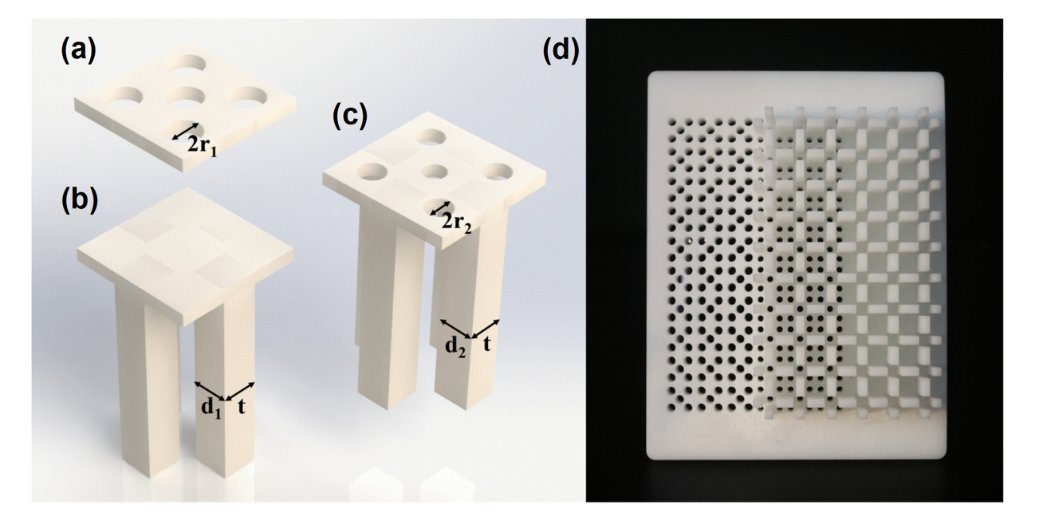Asymmetric transmission has become an important research topic in acoustics because of its important applications in acoustic diode and acoustic communication. Asymmetric transmission acoustic devices are mainly implemented with nonlinear or active structures, which are usually complicated in structure and large in size. Recently, the loss in non-Hermitian systems has provided a new way to realize asymmetric acoustic transmission and reflection in linear media.
Researchers from the Institute of Acoustics of the Chinese Academy of Sciences (IACAS) achieved diffraction control in a non-Hermitian acoustic grating. They introduced periodic loss into the acoustic grating and utilized the combined modulation effect of the real refractive index and loss on the diffraction.
Researchers introduced loss into the grating by opening radiation hole on top of the waveguide plate (Fig. 1a), and increased the real refractive index by setting inserted pillars to block the direct transmission of sound in the waveguide (Fig. 1b). The loss and real refractive index could be adjusted simultaneously after combining the two structures together (Fig. 1c). The units with the holes, the pillars and their combinations were placed into columns separately and then integrated into a supercell. All the supercells were made of photosensitive resin via the 3D printing technique (Fig. 1d).
In order to verify the diffractive regulation ability, researchers carried out simulation and experimental research on the proposed non-Hermitian acoustic grating. Figure 2 showed the simulated and measured sound pressure fields at 3.1 kHz. In the non-Hermitian acoustic grating with carefully designed loss, the +1 order diffracted wave for negative incidence totally disappeared, while the -1 order diffracted wave for positive incidence was stronger than that of the lossless grating. Because of the combined action of the real refractive index and loss on diffraction, the strength of +1 order diffraction wave vector was zero, while the strength of -1 order diffraction wave vector was increased.
In the previous designs of acoustic artificial structures to realize acoustic focusing and imaging, loss was generally considered as a disadvantage. However, in this work, the interaction between the loss and the real refractive index was utilized to realize the diffraction control in the non-Hermitian acoustic grating.
This work, published online in Applied Physics Letters, was supported by the National Natural Science Foundation of China (Grant No. 11874383).

Figure 1. Schematic illustration of basic units with (a) leaked holes, (b) inserted pillars, and (c) leaked holes and inserted pillars; (d) Photo of a sample piece (Image by IACAS)

Figure 2. Simulated and measured sound pressure fields at 3.1 kHz for (a) the lossy grating with negative incidence, (b) the lossy grating with positive incidence, and (c) the lossless grating with positive incidence (Image by IACAS)
Link: https://aip.scitation.org/doi/full/10.1063/5.0004104
Reference:
YANG Yuzhen, JIA Han, WANG Suhao, ZHANG Peng, YANG Jun. Diffraction control in a non-Hermitian acoustic grating. Applied Physics Letters, 2020, 116(21), 213501. DOI: 10.1063/5.0004104.
Contact:
ZHOU Wenjia
Institute of Acoustics, Chinese Academy of Sciences, 100190 Beijing, China
E-mail: media@mail.ioa.ac.cn


